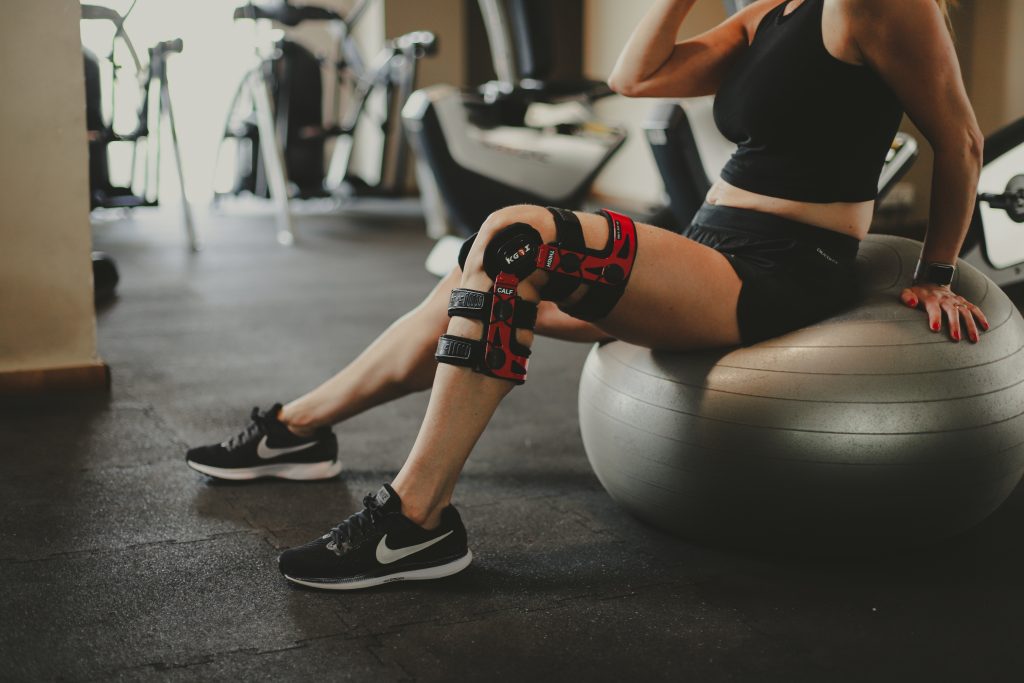Working out is more than a routine it’s a commitment to our health and physical well-being. But when knee pain or old injuries threaten to sideline us, it feels like hitting an unexpected wall. We get it we’ve been in those shoes, feeling that mix of frustration and concern.
This is where the conversation often turns to knee braces as a potential game changer. Not just for managing injuries, but also for preventing them, these supports can be invaluable allies during exercise.
As we delved into whether wearing a knee brace while working out makes sense, we uncovered some compelling evidence-based benefits and things to consider. From different types of orthopedic braces designed specifically for joint protection to their role in injury prevention and even boosting athletic performance there’s a lot here worth knowing.
Whether you’re all about strength training or love the adrenaline rush from high-impact sports, we want to help you keep your knees protected.
Ready to take that step?
What is a Knee Brace?
A knee brace is a supportive device worn around the knee. It helps stabilize the joint and protects it during physical activities.
Definition and purpose
Knee braces provide support and stability for individuals dealing with knee problems. Their primary purpose is to treat injuries, such as strains or sprains, and conditions like osteoarthritis.
These braces help prevent injuries from recurring while allowing us to maintain an active lifestyle. With different shapes, sizes, and colors available, we can find a knee brace that suits our needs and preferences.
Wearing a knee brace during physical activity helps in regaining mobility after injury. It offers joint support when exercising and facilitates rehabilitation by reducing stress on the knee joint.
By providing necessary stabilization, we can engage in workouts safely while protecting against further damage or pain associated with existing conditions. Ultimately, their design ensures that we can still enjoy various exercises without compromising safety or performance.
Different types of knee braces
Knee braces come in various types, each serving specific purposes. We can categorize them mainly into three groups: sleeves, functional braces, and rehabilitative braces. Sleeves provide mild support and compression, making them popular for those seeking knee protection during workouts or lighter activities.
Functional braces offer more stability by restricting motion to prevent further injury. These are often recommended for athletes returning to sports after an injury or surgery.
Rehabilitative braces help limit movement post-injury while allowing for some mobility during recovery. They aid in maintaining the right posture as we heal from conditions like osteoarthritis or significant knee injuries.
Selecting the right one depends on our unique needs and advice from a healthcare provider who understands our situation well. Each type has its benefits that contribute to effective knee injury prevention and overall musculoskeletal health as we engage in physical activity.
Related: Can Knee Braces Help ACL Injury Recovery?
Benefits of Wearing a Knee Brace While Working Out
Wearing a knee brace while working out can provide strong support and stability. It helps prevent injuries during exercises, allowing us to perform better and recover faster.
Support and stability
Knee braces provide essential support and stability during workouts. They help stabilize the knee joint, aiding individuals with pre-existing injuries or conditions like osteoarthritis.
This support allows us to maintain our activity levels while minimizing the risk of exacerbating an injury. With increased stability, we can focus on our workout routines without constantly worrying about knee pain or instability.
Using a knee brace while exercising can enhance our performance as well. The added support encourages us to engage in physical activities that might have otherwise felt daunting due to past injuries.
We find ourselves able to execute exercises more confidently, knowing that the knee brace helps protect against potential strains or sprains during high-impact movements. In this way, wearing a knee brace turns out beneficial for those of us striving for an active lifestyle despite existing knee problems.
Injury prevention
Injury prevention is one of the primary reasons we consider wearing a knee brace while working out. Knee braces are often used to treat knee injuries and conditions like osteoarthritis, helping to prevent further damage and re-injury.
They provide essential support by stabilizing the joint during physical activity, allowing us to engage in exercises more safely. With proper knee support during workouts, we can lower our risk of experiencing pain or setbacks.
The benefits extend beyond just controlling existing issues; they also play a role in preventing potential injuries as we exercise. Many athletes rely on knee braces for added protection while performing high-impact activities or engaging in sports that stress their knees.
A well-fitting brace allows us to continue being active without fear of aggravating an injury or developing new problems. Utilizing a knee brace while working out can be a significant step towards maintaining our fitness levels amid any underlying concerns with our knees.
Improved performance
Wearing a knee brace can truly enhance our performance during workouts. For those of us managing knee problems or recovering from injuries, the added support helps stabilize our movements.
This stability allows us to engage in exercises more confidently and vigorously. A well-fitted knee brace offers the necessary protection while we continue with physical activities, enabling us to maintain momentum without fearing setbacks.
As we push ourselves through high-impact workouts or sports, wearing a knee brace can give us an edge. The extra support provided by these devices improves how we move and perform.
Many athletes who have faced injuries report feeling more secure when they wear a brace. This boost in confidence often translates into better overall results, allowing us to reach fitness milestones more effectively.
Our choice of workout may depend on the type of knee brace used since some braces are designed for specific levels of activity. Consulting with a healthcare provider ensures that we select an appropriate level of support tailored to our needs.
Understanding which type of workouts align best with our braces is vital as it impacts both safety and effectiveness in exercise routines focused on recovery and improvement.
Enhanced recovery
Using a knee brace for working out can significantly enhance recovery after an injury. These braces are designed to provide essential support and stabilization, which allows us to engage in physical activity while healing.
They help reduce strain on the injured joint, making it easier for us to maintain mobility without exacerbating existing issues or causing new injuries. With proper use, we can promote faster recovery times by minimizing pain and inflammation associated with activity.
We often experience accelerated rehabilitation from conditions like osteoarthritis when wearing a knee brace during exercise. The added support helps us regain strength gradually and safely.
This approach not only prevents setbacks but also fosters confidence in our ability to return to higher levels of physical activity sooner than anticipated. Moving forward, understanding how to choose the right knee brace for working out becomes crucial in ensuring continued progress and safety.
Risks of Wearing a Knee Brace While Working Out
Wearing a knee brace can cause discomfort and limit movement during some exercises. We might rely too much on the brace, which could weaken our muscles over time. It’s crucial to weigh these risks carefully before deciding to use one.
Read more to learn about the benefits and considerations of wearing a knee brace while working out.
Potential discomfort
Using a knee brace while working out can sometimes lead to potential discomfort. The level of support provided by certain braces may feel restrictive during physical activity. For example, wearing a more supportive brace compared to a simple knee sleeve can limit our range of motion.
We might find ourselves adjusting frequently or feeling that the fit is too tight around the knee area.
For those with pre-existing conditions like osteoarthritis, this discomfort can intensify when engaging in high-impact exercises. Our experience tells us that if a brace does not fit properly, it can cause chafing or irritation, making workouts less enjoyable and even leading to distractions.
Therefore, understanding how to wear it correctly and choosing one suited for our specific needs is essential for exercise safety and overall comfort while exercising with a knee brace.
Restricted movement
Wearing a knee brace while working out can sometimes lead to restricted movement. The level of support provided by the brace may limit our range of motion, especially if it is more supportive than a simple knee sleeve.
That restriction can make certain exercises more difficult to perform effectively. Our typical workout routines might feel different when adjusting to the added structure of the brace.
Some individuals find that their natural movements are altered due to wearing a knee brace. This alteration can create challenges during high-impact activities or sports, where agility and quick changes in direction are crucial.
Adapting an exercise regimen around these limitations may be necessary as we prioritize knee protection during exercise. It’s important for us to choose activities that align with the type and level of support needed from the brace while being mindful of our comfort and mobility.
Potential over-reliance on brace
Over-reliance on a knee brace can become a concern for those of us dealing with knee problems. While these braces provide critical support, they may lead to a false sense of security during workouts.
This reliance might cause us to engage in activities we would otherwise avoid due to pain or risk of injury. Additionally, the extra support from a knee brace can sometimes inhibit our natural movement patterns.
This restriction could make it harder to exercise effectively, especially if the brace is more supportive than a simple sleeve.
It’s essential to consider that while knee braces often help with recovery and stability, prolonged dependence may weaken the muscles around our knees over time. We might find ourselves less confident in our own strength and ability to perform certain exercises without assistance from the brace.
Consulting with a healthcare provider can guide us in finding the right balance between utilizing a knee brace and strengthening our legs independently through proper rehabilitation strategies.
Adjusting exercise routines based on individual needs will improve overall safety and performance as we navigate physical activity with knee issues.
Related: How To Choose The Knee Braces For Running
When to Wear a Knee Brace While Working Out
We should wear a knee brace when we have a pre-existing knee injury. It also helps during high-impact exercises or sports to reduce the risk of pain.
Pre-existing knee injury
We often face challenges when dealing with a pre-existing knee injury. Knee braces can be a valuable tool for us during workouts. These devices provide essential support and stabilization, which is crucial for preventing further damage.
Many people use knee braces to treat injuries like osteoarthritis or to avoid re-injuring themselves while exercising. The right brace allows us to maintain an active lifestyle despite our limitations.
Choosing the appropriate knee brace is important for anyone with existing conditions. Consultations with healthcare providers guide us in selecting the correct type of support based on our specific needs.
Some might opt for more supportive options, while others could benefit from lighter sleeves that allow greater mobility during exercise. Understanding what works best helps ensure safety and effectiveness as we manage our physical activity while wearing a knee brace.
High-impact exercises or sports
High-impact exercises and sports can put significant stress on our knees. Activities such as running, jumping, or playing basketball often involve sudden movements and changes in direction.
This intensity increases the likelihood of aggravating existing knee issues or sustaining new injuries. Wearing a knee brace during these activities offers additional support to help stabilize the joint, which is especially crucial for those of us with pre-existing conditions.
Knee braces are commonly used to treat various concerns like osteoarthritis and prior injuries. We find that they provide necessary stabilization while allowing us to participate in high-impact workouts safely.
Their design helps distribute forces evenly across the knee joint, potentially reducing discomfort and preventing further injury during physical activity. Engaging in these intense exercises while wearing a brace can enhance exercise safety.
Choosing the right moment for using a knee brace depends on individual circumstances and fitness goals, particularly if we have experienced previous injuries that could hinder our performance in high-impact situations.
Understanding how to select an appropriate brace ensures we reap the benefits without compromising mobility or comfort during workouts.
To prevent knee pain
Wearing a knee brace while working out can serve as an effective strategy to prevent knee pain. Knee braces provide essential support and stability, particularly for those of us with pre-existing conditions or previous injuries.
They are often used to treat issues like osteoarthritis, which affects many individuals during physical activity. With proper guidance from a healthcare provider, we can choose the right type of brace based on our specific needs.
Engaging in high-impact exercises without adequate support may increase the risk of aggravating existing knee problems. A well-fitted knee brace helps maintain joint alignment, allowing us to stay active while minimizing discomfort.
Additionally, it acts as a preventive measure against potential injuries that could hinder our participation in various sports and exercises. Choosing to wear a brace means we prioritize both safety and performance during workouts.
Moving forward into deciding how best to select the right knee brace for our exercise routines will help enhance our workout experience even further.
Related: How To Choose Right Knee Braces
How to Choose the Right Knee Brace for Working Out
To choose the right knee brace, we should consult a healthcare provider for advice. We also need to think about the type of support our knees require and make sure the brace fits well.
Consult with a healthcare provider
Consulting with a healthcare provider is crucial for anyone considering wearing a knee brace while working out. A professional can assess the severity of our knee problems and recommend the appropriate type of brace.
They understand that knee braces are often worn to treat injuries, osteoarthritis, and to prevent re-injury. Based on their expertise, they will guide us in selecting either a supportive brace or a more flexible sleeve based on our individual needs.
The right guidance ensures we wear the correct size for optimal fit and support. Without proper fitting, we may experience discomfort or restricted movement during exercise. Healthcare providers also help us determine when it’s appropriate to use a knee brace depending on our activity level and fitness goals related to injury prevention or recovery from an existing condition like osteoarthritis.
This foundational step supports our journey towards safe physical activity while addressing any concerns regarding exercising with a knee brace effectively.
Understanding how to choose the right knee brace for working out enhances both safety and performance during exercise routines.
Consider the type and level of support needed
Choosing the right knee brace involves understanding the type and level of support needed for our specific situation. Knee braces come in various forms, each providing different levels of stability.
For example, a supportive brace might be necessary for an existing knee injury or osteoarthritis, while a simple sleeve may suffice for minor discomfort during exercise. This distinction is vital as it directly impacts how we perform activities.
While assessing our needs, we should discuss options with a healthcare provider to ensure we’re selecting the correct type of support. They can help us determine whether we require extra stabilization for high-impact exercises or if a lighter option will do just fine.
A well-fitted brace not only caters to our unique requirements but also allows us to maintain an active lifestyle safely and effectively while minimizing potential injuries.
Proper fitting and sizing
Proper fitting and sizing of a knee brace is crucial for effective support during workouts. A poorly fitted knee brace can lead to discomfort or restricted movement, potentially hindering performance instead of enhancing it.
Consulting with a healthcare provider helps determine the correct size and type needed for our specific situation. We have observed how finding the right fit allows us to exercise safely while benefiting from the knee brace’s advantages in injury prevention.
It’s essential to take accurate measurements before selecting a brace. Knee braces come in various shapes, sizes, and colors to cater to individual needs. When we ensure that our chosen knee brace fits well, it maximizes stability without creating dependency on the device.
With this understanding of proper fitting and sizing solidified, we can now explore when wearing a knee brace while working out is appropriate for ourselves.
Conclusion
We’ve explored the important considerations around wearing knee braces while working out. Knee braces can provide crucial support, especially for those with existing injuries or conditions like osteoarthritis.
Each individual’s needs may vary, and consulting a healthcare provider is essential to find the right brace and ensure a proper fit. We encourage everyone to assess their own circumstances: Do we need extra support during certain exercises? Taking proactive steps regarding our knee health can lead to safer workouts and improved performance.
As we prioritize our well-being, let’s embrace every opportunity to stay active, confident, and injury-free!
FAQs
1. Should I wear a knee brace while working out?
Yes, wearing a knee brace during physical activity can provide benefits such as injury prevention and exercise safety.
2. How does a knee brace help when I’m active?
A knee brace offers support to your joint during an active lifestyle, reducing the risk of injury and ensuring safety while exercising.
3. What are the benefits of using a knee brace for exercise?
Using a knee brace for exercise can enhance stability, prevent injuries, and promote safe workout practices.
4. Can anyone use a knee brace during workouts?
Yes, anyone engaging in physical activity may consider using a knee brace to maintain their active lifestyle safely.





